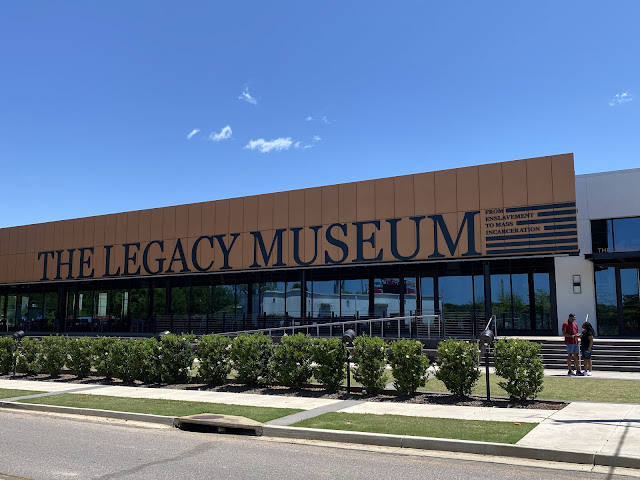Martin Luther King said, “One day the South will recognize its real heroes.” Montgomery, Alabama just might be rising to the task. As loathsome as its history of racism is, the city now offers some outstanding museums and memorials to educate and reflect on racism and civil rights.
Before I say anything about the wrenching experience of touring Montgomery’s museums and memorials, I have to note the honeysuckle. I have no idea if it’s intentional or not, but the intense sweet aroma of huge hedges of honeysuckle surrounds you when you exit both the National Memorial for Peace and Justice and the Civil Rights Memorial. Just when you think you are completely spent, the flowers’ perfume is a jolt of joy.
The outstanding Legacy Museum focuses on lynching and racial segregation. Two hours in there flies by as the exhibits force you to confront hideous cruelty and its institutional protections. The walls are covered with powerful quotes, almost too many to absorb, and so many that they are impossible to remember. Photography is forbidden. I wanted to make mental notes of the particularly poignant ones but by the time I left the building, I could only retain one. It was about how the law doesn’t prosecute the white oppressors, it protects them. It was something like “They trade a white robe (i.e. the Ku Klux Klan) for a black robe (i.e. a judge).”
The National Memorial for Peace and Justice is a sculpture garden of sorts. I entered what seemed like a graveyard of tall gravestones, except that they were affixed to the ceiling instead of being planted in the ground. I felt like I was walking in a forest of uniform brown slabs. Each slab is inscribed with the name of a county and its state, and the names and death dates of people who were lynched there. I searched for the names of counties in Virginia where my family is from. I craned my neck back to read the slabs as I passed by. But as I moved further in to the forest-like thicket, the floor gradually lowered and I had to tilt my head back further to be able to read the inscriptions. Eventually, the floor sloped so low and the tops of the slabs were so high, that the slabs hanging from the ceiling seemed like they were lynched bodies suspended from above. It was a sickening revelation.




